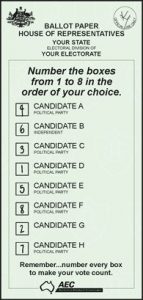 Here’s our batch of brand new Mirobot v3 kits on their arrival in Australia, dozens stacked. Since the v3 have a neat acrylic frame, I think I’ll do a proper “unboxing” and first build video of one soon, so you can see for yourself what this is about.
Here’s our batch of brand new Mirobot v3 kits on their arrival in Australia, dozens stacked. Since the v3 have a neat acrylic frame, I think I’ll do a proper “unboxing” and first build video of one soon, so you can see for yourself what this is about.
Many classes of year 5 and 6 students around Brisbane and their teachers have done our Robotics Workshops in recent years (using the Mirobot v1 and v2), and others have purchased their own Mirobot to build and use at home. And schools around Australia order sets to run their own programs.
What’s special about the v3 is that it’s now possible to repeatedly build and (carefully) disassemble the Mirobots, which means that not only the programming but also the assembly process can be repeated for future cohorts.
Below is an animation of the v3 kit build process:
The Mirobot is a “logo” turtle: it takes a pen (up&down) and can move forward/reverse (in mm) and turn left/right (in degrees). So, Mirobot can draw, and that’s really important because it provides students with very direct feedback for their programming. There are also bump and line-following sensors.
Students engage with inquiry-based learning: first the build which involves learning about the components and the mechanical structure – then, programming from a “simple” square, to a house, circle, stars and much more complex patterns. Students also make them write letters. Sure!
Most of the current batch was already pre-ordered, but we have some regular stock.


 For any Australian Curriculum HASS topic from Prep to at least Year 6, we can safely say “We have a resource on that!”
For any Australian Curriculum HASS topic from Prep to at least Year 6, we can safely say “We have a resource on that!”
My 9 year old son fell in love with all the aspects of this program - the simple but still…
Cara, Parent